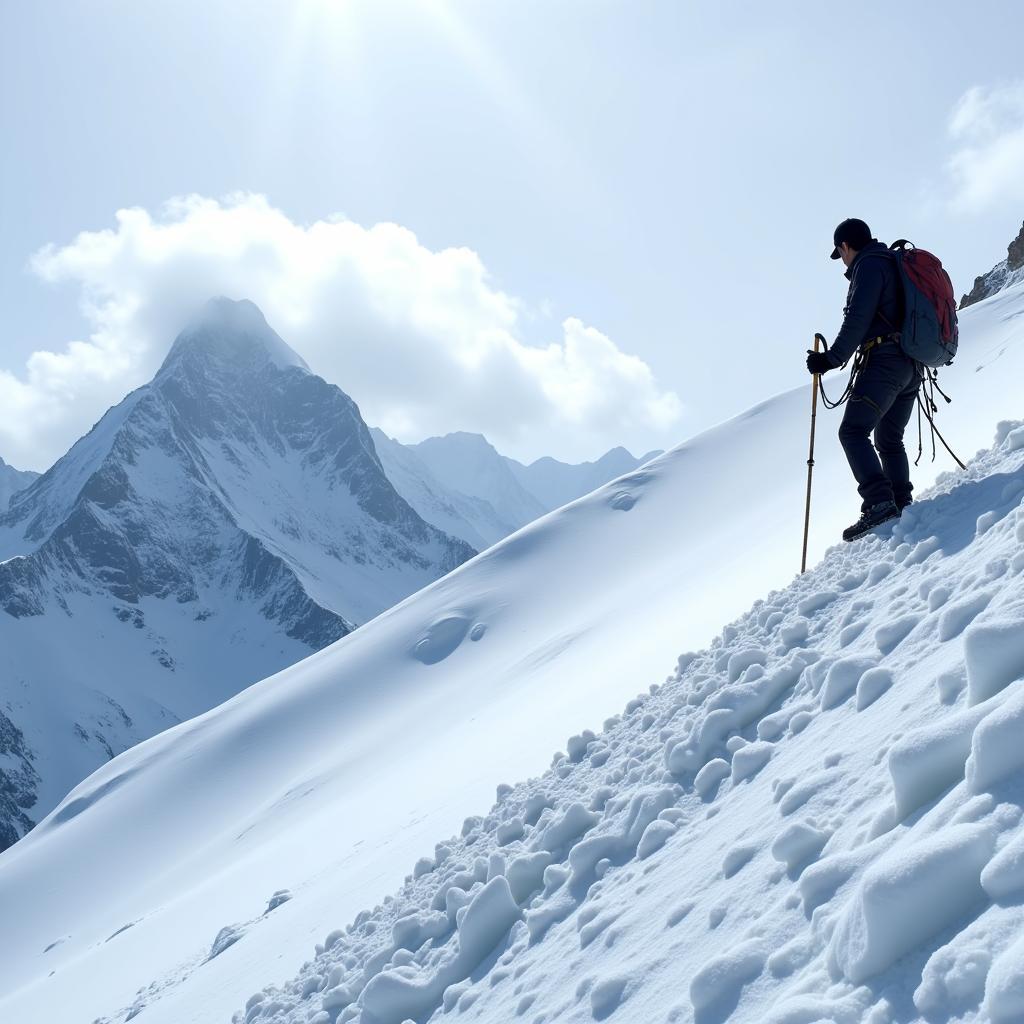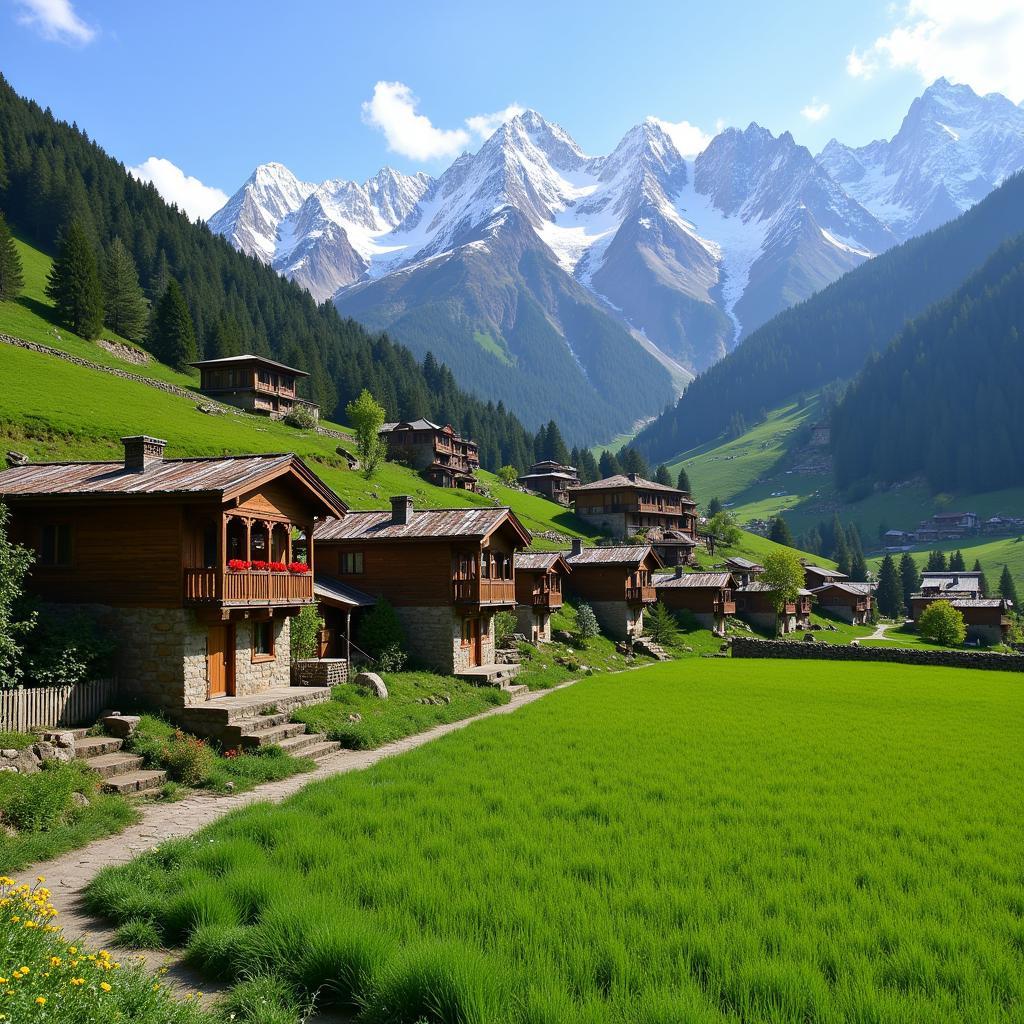Pakistan, a land of breathtaking landscapes, boasts some of the world’s most awe-inspiring mountain ranges. From the soaring peaks of the Karakoram to the rugged beauty of the Himalayas, these mountains have captivated adventurers and nature enthusiasts for centuries. This guide will delve into the fascinating world of Pakistan’s mountains, exploring their names, significance, and the allure they hold for travelers worldwide.
Unveiling the Giants: Famous Mountain Names in Pakistan
Pakistan is home to five of the world’s fourteen highest mountains, known as the “Eight-thousanders,” each exceeding 8,000 meters above sea level. Among these towering giants is the mighty K2, the second highest peak on Earth, standing tall at a staggering 8,611 meters. Other notable “Eight-thousanders” gracing Pakistan’s skyline include Nanga Parbat, Gasherbrum I, Broad Peak, and Gasherbrum II. These mountains, with their challenging climbs and breathtaking vistas, attract seasoned mountaineers seeking to conquer their formidable slopes.
But the allure of Pakistan’s mountains extends far beyond the famed “Eight-thousanders.” The country is adorned with countless other peaks, each possessing its own unique charm and significance. The Hindu Kush, a vast mountain system spanning over 800 kilometers, boasts peaks like Tirich Mir, the highest peak in the Hindu Kush range. Further south, the Sulaiman Mountains and the Salt Range offer a different kind of beauty, characterized by their arid landscapes and unique geological formations.
 Climber Scaling K2 in Pakistan
Climber Scaling K2 in Pakistan
Beyond the Names: Cultural Significance and Natural Wonders
The mountains of Pakistan are not just geographical marvels; they are deeply intertwined with the country’s culture and history. For centuries, these mountains have served as natural barriers, shaping the region’s geopolitical landscape and influencing the development of distinct cultures and traditions. The people of the northern regions, living amidst these towering peaks, have developed a unique way of life, deeply connected to the rhythms of nature.
Beyond their cultural significance, Pakistan’s mountains are also home to an astonishing array of flora and fauna. From the snow leopards of the Karakoram to the markhor of the Himalayas, these mountains provide refuge to a diverse range of wildlife. The lush valleys nestled between the peaks are a testament to nature’s artistry, with vibrant wildflowers carpeting the meadows during spring and crystal-clear streams cascading down the slopes.
Exploring Pakistan’s Mountainous Treasures: Tips for Travelers
For those drawn to the call of the wild, Pakistan’s mountains offer a plethora of trekking and mountaineering opportunities. Whether you’re an experienced climber seeking to conquer a challenging peak or a nature enthusiast looking for a scenic trek, there’s something for everyone. However, it’s crucial to remember that venturing into these mountains requires careful planning and preparation.
Here are some things to keep in mind when planning your mountain adventure in Pakistan:
- Permits and Regulations: Always obtain the necessary permits and familiarize yourself with local regulations before embarking on any trek or climb.
- Weather Conditions: Mountain weather can be unpredictable. Be prepared for sudden changes and pack accordingly.
- Experienced Guides: Consider hiring experienced local guides, especially if you’re venturing into remote areas or attempting challenging climbs.
- Respect for the Environment: Practice responsible tourism by minimizing your impact on the environment. Pack out your trash and respect local customs and traditions.
 Traditional Village in Hunza Valley, Pakistan
Traditional Village in Hunza Valley, Pakistan
Frequently Asked Questions About Mountains in Pakistan
1. What is the best time to visit the mountains in Pakistan?
The best time to visit depends on your interests and the region you plan to explore. Summer (May-September) offers pleasant weather for trekking in the northern areas, while spring (March-April) brings vibrant blooms.
2. What are some popular trekking routes in Pakistan?
Pakistan offers a range of trekking routes, from easy to challenging. Some popular options include the Fairy Meadows trek, the Rakaposhi Base Camp trek, and the Baltoro Glacier trek.
3. Are there any cultural experiences to be had in the mountain regions?
Yes, the mountain regions of Pakistan are home to diverse cultures and traditions. You can experience local hospitality, witness traditional festivals, and visit ancient monasteries.
4. Is it safe to travel to the mountains in Pakistan?
Pakistan has made significant strides in improving safety and security. However, it’s always advisable to check travel advisories and exercise caution, especially when venturing into remote areas.
5. What should I pack for a mountain trip to Pakistan?
Essential items include sturdy hiking boots, warm clothing, rain gear, a first-aid kit, sunscreen, a hat, and sunglasses.
Discover the Majesty of Pakistan’s Mountains
From the towering heights of K2 to the serene beauty of the Hunza Valley, the mountains of Pakistan offer a glimpse into a world of wonder and adventure. Whether you’re an avid climber, a nature enthusiast, or simply seeking a break from the ordinary, these majestic peaks hold a certain allure that is hard to resist. So, plan your trip, pack your bags, and prepare to be captivated by the unparalleled beauty of Pakistan’s mountains.
Remember, if you need assistance planning your adventure, you can always reach out to our team at +923337849799, email us at [email protected], or visit our office located at Dera Ghazi Khan Rd, Rakhni, Barkhan, Balochistan, Pakistan. We’re available 24/7 to help you make the most of your journey to Pakistan’s breathtaking mountains. For more information on specific aspects of traveling in Pakistan, check out our articles on names of mountains in pakistan and five star hotels in pakistan list. Safe travels!